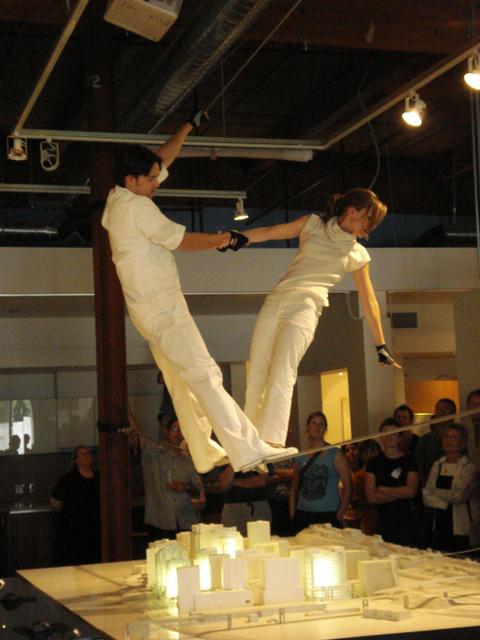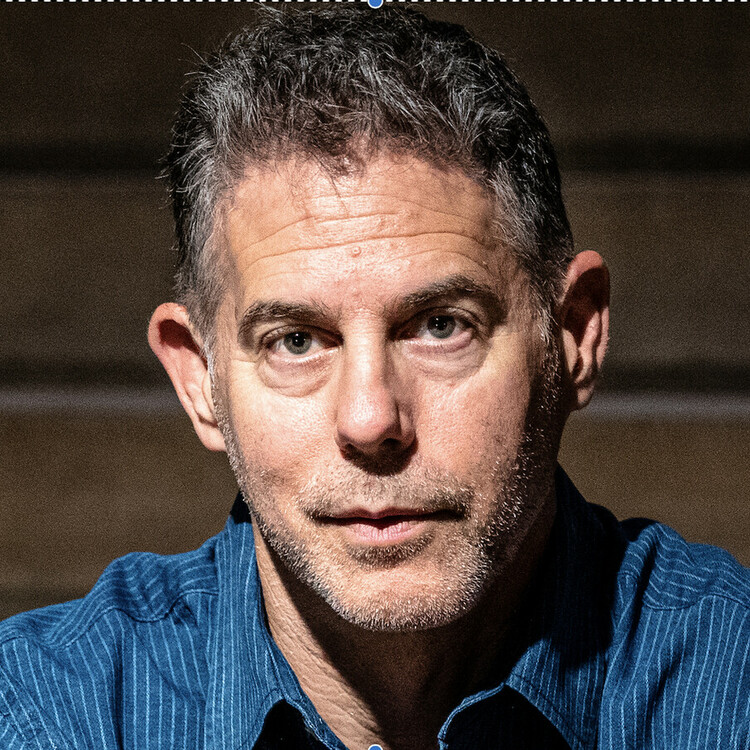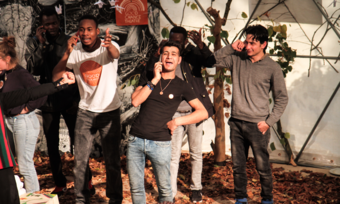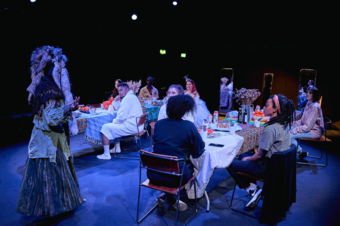The New Work of Building Civic Practice

A Question
Recently, my father asked me what I’m trying to do with regard to my work in civic practice. I told him: “I think we’ve got a lot of challenges these days, in pretty much every private and public sector in this country, and I think artists are a massive untapped resource that could help in surprising and meaningful ways.”
He assumed I meant that by making plays about these challenges, artists could aim the attention of audiences at issues and potential solutions. While I love plays, and sometimes make plays, I told him that wasn’t what I meant: “I want to help expand the body of practitioners and advocates who recognize the possibility of, and value in, different kinds of partnerships between artists and members of their community.”
My father is a retired lawyer who serves as a volunteer attorney at a legal clinic operated by the University of Maryland School of Law in downtown Baltimore. To try to give a specific example, I asked him about the clinic and what he feels they need to better accomplish their mission. He said they need to get the word out, especially in West Baltimore, about the services they offer and make the case (no pun intended) that they are a free, valuable community resource. I responded by saying: “How would you feel about working with a theatre artist who would partner with you to strategize increasing your relationships and visibility in West Baltimore?”
He asked if I meant fliers, or other marketing strategies. I said I did not.
He asked how, then, might an artist help make the clinic’s work more visible and accessible?
Relationships (Of the Non-family Kind)
Arts organizations do not have to engage with non-arts partners solely through a lens of project-based needs.
Currently, within institutional theatre organizations, community partnerships are most frequently developed to implement programming that surrounds mainstage productions. That programming exists to deepen dramaturgical reach and impact of the work selected and presented by the artists. Institutions sometimes retain partners beyond singular projects, returning to them for help on other projects when content seems aligned with the partner’s constituency or mission. These partnerships are valuable; they can effectively build new relationships around meaningful, shared interests, and they help arts organizations broaden the scope of their presence in their local communities. But, they operate in a mode of discourse closer to a monologue than a dialogue. The initiating impulse—the voice that puts out the call, so to speak—is the artist. The non-arts partner has a choice: listen, respond, or not. But rarely does the invitation to conversation, to co-creation, come from the partner.
I think, as artists and organizers involved in a collaborative form that demands, arguably, one skill above all others, we are at a moment where we can put that skill to new use. That skill is listening, and we can radically alter our role in our communities if we employ it with greater intentionality and generosity. Arts organizations do not have to engage with non-arts partners solely through a lens of project-based needs. Partnerships can be relationship-based, and projects can originate from a different type of exchange. Producing new work for/in the theatre does not have to only mean making new plays. It can mean producing new relationships, producing new forms of events and processes, producing new ways of crossing disciplinary and sector boundaries.
Intersections
Lately, as an extension of Sojourn Theatre’s long-term exploration of relationship-based work, and as part of the Center for Performance and Civic Practice’s initial activities, I’ve begun to define civic practice as activity where a theatre artist employs the assets of his/her craft in response to the needs of non-arts partners as determined through ongoing, relationship-based dialogue. It’s the intersection of two sets of content. Let’s call them an x-axis and a y-axis.
The x-axis is theatre activity that is not limited to the production of plays, but rather is a set of tools, of assets, that theatre artists have access to because of our experience in producing plays (and performance). We bring these assets to the table, any table, where we are invited.
Some of these tools are:
- The ability to design and lead a process where collaborative activity leads to decision-making and shared investment.
- The ability to conceptualize and execute a public event on a specific timeline.
- The ability to synthesize complex content into meaning that can be articulated and understood.
- The ability to problem-solve.
- The ability to turn diverse stakeholders with varied self-interests into coalitions.
We bring these tools of dramaturgy and process to our own spaces. We can bring them and apply them in other spaces—spaces where artistic expression is not the core mission.
The y-axis is a set of needs, or desired outcomes, that we might encounter at those non-arts-based spaces—if we listen. These desired outcomes offer clear starting impulses for collaborative partnership work. They are:
- Advocacy—help increase visibility and propel mission/message.
- Dialogue—bring diverse groups into meaningful exchange with each other.
- Story-sharing—gather and share narratives from a particular population or around a particular topic.
- Civic application—engage the public and decision-makers together in acts of problem-solving and crafting vision.
- Cross-sector innovation—leverage skills and experience from different fields or disciplines to create and manifest new knowledge.
Articulated in another way, some needs of non-arts partners may be described as:
- Building a framework for dialogue around polarizing issues.
- Acknowledging varied self-interests while building coalitions.
- Developing communications strategies for internal and external stakeholders.
- Remaking how site or space is perceived and experienced.
The x-axis are the tools.
The y-axis are the needs.
Civic practice is what can happen where and when they purposefully intersect.
I am not suggesting that artists should be selflessly in service to whatever outcome any community partner desires. As with any collaboration, values must have some alignment. Conversations must reveal some mutual goals. Activity evolves from a shared, generous curiosity and a co-investment in public work. And at the root of this body of practice is the need to listen, over time, so as to discover how the artist assets and the partner needs may serve each other in surprising moments and previously unimagined forms.
Some Examples
There are so many out there—these are a few that get at diversity of initiating impulse, institution, form, and geographic region.
- Appalshop’s Thousand Kites is a national dialogue project addressing the criminal justice system.
- Los Angeles Poverty Department’s long-time work advocating for and working with homeless collaborators on skid row.
- Ping Chong and Company’s Undesirable Elements series, now creating thematically specific story-sharing models based on the needs of partners who contact them, such as their Secret Survivors production.
- Marty Pottenger’s work as full-time artist-in-residence for the City of Portland, Maine, learning the needs of those at work in municipal government and creating programming with civic application.
- Sojourn Theatre’s work with the New River Valley Planning Commission and Virginia Tech in five rural Virginia counties using part of Sojourn’s interactive production built to make spaces for dialogue and create a public engagement tool with civic application.
- Lookingglass Theatre Company’s work in Chicago with Alzheimer’s patients and their caregivers using the power of cross-sector innovation to address challenging health and long-term-care issues.
And at universities:
- A theatre graduate student in Illinois working with a Muslim Student Association to develop a performance/installation event focusing on image and cultural identity.
- A theatre graduate student in Maryland working with an LGBTQ center to conceptualize a one-day event that merges spectacle, participation, and construction tasks to raise visibility and make a safe space more welcoming.

Doing the Work
Since theatre institutions began to grow education departments decades ago, the term “teaching artist” has become a common title for actors, playwrights, directors, devisers, designers, and other theatre artists who spend some portion of their time, and receive some portion of their income, working with people (most often young people) in a massive variety of learning contexts. Whether they are teaching the skills of the artistic discipline, using integrated performance tactics to deepen other curricular areas, or creating theatre events and workshops to help schools examine and discuss challenging social and cultural subject matter, these teaching artists are using the assets listed on the x-axis above. And they are consummate listeners. The best of them are ever sensitive to the needs of partner organizations and the shifting energies of the individuals with whom they collaborate/teach/guide. In other words, we already have a skilled (and underutilized) legion of artists in our midst who can help pave the way for civic practice as a fieldwide endeavor.
In addition, there are many, many theatre practitioners who have never taught but are hungry for the type of engaged work that civic practice offers them and have the skills to undertake that work meaningfully. University theatre programs across the country are seeing exponential growth in demand for courses that deal with civic engagement, community-based practice, site-based collaborations, and applied theatre. In fact, the field of applied theatre is swiftly gaining traction in this country after years of use overseas, subsuming terms and areas that came before it. The challenge of the trending term “applied” is that it suggests those who use theatre tactics for something other than (though perhaps inclusive of) the creation and presenting of performance are in the service game, while those who make and show are in the art game. But our field needs the strengths of varied impulses and the strategies of all forms to cross-pollinate, spiritually as well as aesthetically. The hybrids at the intersection of civic life and artistic activity offer us, individually and as a community of practitioners, the potential to make our arts organizations truly central to the vitality of community life in new and deeply impactful ways.
We can engage with civic, business, social service, community, health, education, and faith-based partners in ways that are relationship-specific and have as starting impulses not just the content we the arts organizations have chosen for presentation but a broad spectrum of activity that places the assets of creativity and collaboration in service to and in partnership with collaborators old and new. There is capacity-building to do in our field—around skills, partnerships, and leadership. By doing that work, we can, as specific organizations and as a field:
- Build an increased pool of stakeholders and an expanded spectrum of what participation in the arts means.
- Offer new and meaningful opportunities for artists to invest in their communities, practice their art, and build demand for creative public activity.
- Increase demand for the assets that artists bring to community settings beyond the sites where art is traditionally contained and presented.
A Response
My father asked me: “How could a theatre artist help make the clinic’s work more visible and accessible?”
I told him:
With partners in West Baltimore who wanted to act as hosts and believed in the services the clinic offers, a partner artist could work to help shape public conversations and develop interesting, creative ways to bring the clinic and community members in contact with each other. I don’t know what form imaginative acts or expressive actions might take in this specific instance. But a theatre artist drawn to this work is accustomed to shared, collaborative goals, has experience in creating inclusive process, and, most importantly, knows what they don’t know, and how to know more. By listening.
Conclusion
Producing new work does not have to only mean making new plays. And our new work practice can excel not just in the caliber of our expression but in the quality of our listening. If we can accomplish that, we model what civic life today desperately needs: a practice that places dialogue ahead of monologue, imagination at the heart of problem-solving, and listening as equal in value to expression.








Comments
The article is just the start of the conversation—we want to know what you think about this subject, too! HowlRound is a space for knowledge-sharing, and we welcome spirited, thoughtful, and on-topic dialogue. Find our full comments policy here
Michael, thanks for writing so clearly about some ideas that I've been wrestling with how to articulate over the past couple months. A student in the MA in Applied Theatre program at CUNY linked to your post. In that program, we continually engaged with the question of "application" vs. "art." At the other end of it (ie, post-graduation), I find that part of the art is in the quality of engagement at all stages of the process - listening to what community needs are, finding ways to offer ourselves as artists and individuals, and building the process of collaboration and creation. Thanks for honoring those essential pieces of doing this work.
Hi Michael - Nice post - very thoughtful and informative. Just curious if you know of any effort being made to build a theoretical (or practical) bridge between theatrical endeavors in "civic practice" and visual arts projects predicated on "social practice" as described by artist/writers such as Pablo Helguera and Shannon Jackson. Hyperallergic just had an interesting post on that emerging field of endeavor here:
http://hyperallergic.com/54...
Thanks, Andy. Yeah, I actually posted a comment on that essay a few days ago leading folks back to this post of mine. The Center I've started (The Center for Performance and Civic Practice) actually has this as one of three core stated intentions-
" build a working bridge between the growing fields of Public Interest Design (graphic, architectural, virtual) and theatre/performance-based Civic Practice. Both of these spheres are full of social practice projects engaging partners with non arts-centered missions across sectors like health, social service, and municipal government, but these artists, their practices and the vocabularies they use are woefully siloed. There is an opportunity for shared resources and knowledge, but most importantly, there is the opportunity to make new knowledge, and to make that new knowledge's manifestation benefit our communities and fields of study in powerful ways."
Places where I know this investigation of potential bridges is currently underway, in one way or another-
Animating Democracy (run out of Americans for the Arts; School for Visual Arts in NYC, and their new Design for Social Innovation program led by Cheryl Heller; Network of Ensemble Theatres, especially the micro-fests over the next year focused on performance and place. Artists like Aaron Landsman, Marty Pottenger, my frequent collaborator Shannon Scrofano and others are also in the mix.
Michael--Thank you for yet another well-reasoned, well-written wealth of thought provoking words. After reading it, I knew that I would want to have students in my course on non-profit arts organizations read your post. I queried, what folder would I save your article in? I had a folder for the positive economic impact of the arts, but for your article, I created a folder for "arts and community problem solving." (I am a bit troubled by my use of the word "problem" -- but it is just shorthand for me to encompass the thoughts of meeting the varied community needs). Thanks again for sharing.
Thank you for this, Michael. I am with Carlton - this applies to and beyond theater. The work is about relationships and the role that art and creative process plays in community life.
Here at London bubble I like to think we work in dialogue with our community making theatre with a wide range of people for a wide range of reasons. I'd like to add to this very clear article that making work that is driven by a greater force than a single artist, often leads to powerful artful theatre. We make work authored by children of 7 that is profound and moving. We also create intergenerational work from the provocations of elders, that draws together our community to listen and reflect. There is a simple and healthy process at work here, that takes theatre back to its essential job of offering a safe space for us to consider issues that matter. Be we professional or amateur, artist or artisan.
Great post. I thank Tammy Ryan for sharing this with me. Artists practice reflection and are trained in self expression. I don't believe the general population deems these actions important or necessary for surviving. How fortunate we artists are that we've been exposed to the methodology of creation as a path towards greater consciousness. If more foundations, schools, non-profits, and businesses would approach relationships in the manner you describe we could support most of our communities needs or at least address and define them without everyone feeling alone in the fight for success.
Nicely stated Michael! Well thought out--interesting--useful. Visionary. Yes!
Andrea Stolowitz
Thanks for this Michael. Beautifully clear, and quite exciting. For years, with foolsFURY, we have be teaching and training artists and ourselves with the generative element focused primarily on creating new "make and show" theater work. But these tools are useful in other areas, and in service of other needs, and that's increasingly of interest.
hi ben- indeed, i think ensembles are a prime place for this work to grow in the american theatre, and i am excited to be at the upcoming micro-fests and in conversation about it.
Michael thank you for this. It's very exciting to read it so clearly laid out. I've been doing this kind of work in Pittsburgh for years, but not in any formal organized way. First with City Theater with outreach projects, later with Playback theater. What's interesting is that in several cases, a civic partner approached us with the idea. Peter Harvey at the time worked with Just Harvest. He wanted to do a project with the women on welfare he was working with, that would give voice to their stories and also give them visibility in the community. The play we wrote began with listening, but later the metaphor became about seeing, we called it Through A Glass Darkly and it was performed by the women holding a mirror up first to themselves and then to us. Next when Peter worked with Catholic Charities he approached Playback to work with newly arrived Sudanese refugees to give them a platform to interact with the community, the play that came out of that was Long Journey Home and it was performed by the Sudanese, shadowed by Playback actors. Afterwards audiences were stunned as the "actors" continued the conversation about what they'd survived and were still struggling with -- the community had had no idea they were living among us. Again listening was the place we started, as difficult as that was because of the obstacles of language/culture and experience. Currently Peter is the director of Pittsburgh's Fairhousing and is working to bring artists both in Pittsburgh and France together to create a mutli-language/cultural theater experience in both countries about housing discrimination. Peter has always been instinctively drawn to theater in the cause of the social work he does. I wonder if I could connect you with him?
Hi Tammy- i'd love to be in touch with him, and with you. absolutely.
MIchael,
Thanks for this post. Your thoughts on the listening as the center of practice are right on point. It is within the act of listening that we learn more about ourselves and our community. I think it is also important to note that this approach is not only for theater practitioners, but applies across disciplines in the performing and visual arts. It is the work that Alternate ROOTS has been pushing for more than 35 years now. It is real and it works and unfortunately we are still trying to make the case.